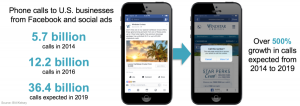Whether you’ve been retired and you want to get a part-time job or you’ve had a stable job for a long time and now you need to make a career change, you might realize that the process behind a job search has changed a lot since you last looked for one. From submitting an application to signing all the necessary employment documents, this helpful guide will walk you through the steps necessary to navigate a digital job search.
Start With Your Resume
One of the biggest ways a job search has changed in the digital age is that a computer program called Applicant Tracking Systems (ATS) will now scan your resume looking for keywords before it ever ends up on the desk of a hiring manager. As a result, you not only want to tailor your resume for each job, you also want to customize it so it makes it past the ATS.
This includes making sure your resume is free of grammar and spelling mistakes, including keywords related to the position, and sending it as a Word document. If you’re not sure what keywords to include, you can use the job description to identify some.
After your resume passes the ATS, it’s on to the hiring manager. Career advice expert Amanda Augustine says that most employers look for six key pieces of information in your resume: name, current company, and position start date of the current position, previous companies, and positions start and end dates of previous positions, and education. Using a clean and uncluttered format for your resume will make it easy for them to find this information.
Apply Online
Once your resume is ready, you’ll need to apply for jobs online. Plenty of organizations use websites such as LinkedIn, Monster, and CareerBuilder to post jobs. While these and other job posting websites are a good place to start, don’t forget to go directly to the website of any company you might be interested in to look for positions. Sometimes you’ll find positions listed there that never make it to the other websites.
Cold Calling Still Works
While online applications are king in the digital age, there are some traditional job-hunting skills that still work, such as cold calling. If you have a few companies that you’ve identified as good possibilities but they don’t have any positions posted, do some research using the publicly available information to see if you can find the contact information for one of the hiring managers.
You can then give them a call, introduce yourself, and ask if you can send a cover letter and resume for future consideration. Even if managers aren’t hiring now, some will make an opportunity to hire to get a great person they know they’ll need in the future.
Be Prepared for a Video Interview
Once you’ve submitted your resume, wait about one week after the application deadline to reach out for a follow-up. During this time, some hiring managers might want to set up a time for a video interview. Video interviews are gaining in popularity as part of the first round of interviews because they get the process started faster and save on transportation costs. For a successful interview, you need to practice beforehand. A few days before your interview, make sure your camera and audio are working, and be sure your background is clean and tidy.
Get Important Documents Through Email
Once you’ve successfully navigated the interview and you’re offered the job, you might be surprised to receive all your important work documents digitally. Today, many businesses will send contracts and other documents through email or mobile devices for you to sign electronically. An e-signature is a fast, easy, and secure way to sign all the documents you need without the hassle of printing hard copies and scanning or faxing everything back to your new employer.
As you set out to find a new job in the digital age, don’t feel overwhelmed by all the new changes. Instead, use the tips discussed here to successfully navigate your search and find your next dream job.
Business & Finance Articles on Business 2 Community(34)
Report Post




